Destination: Bolivia
An Antipodean travel company serving World Travellers since 1983
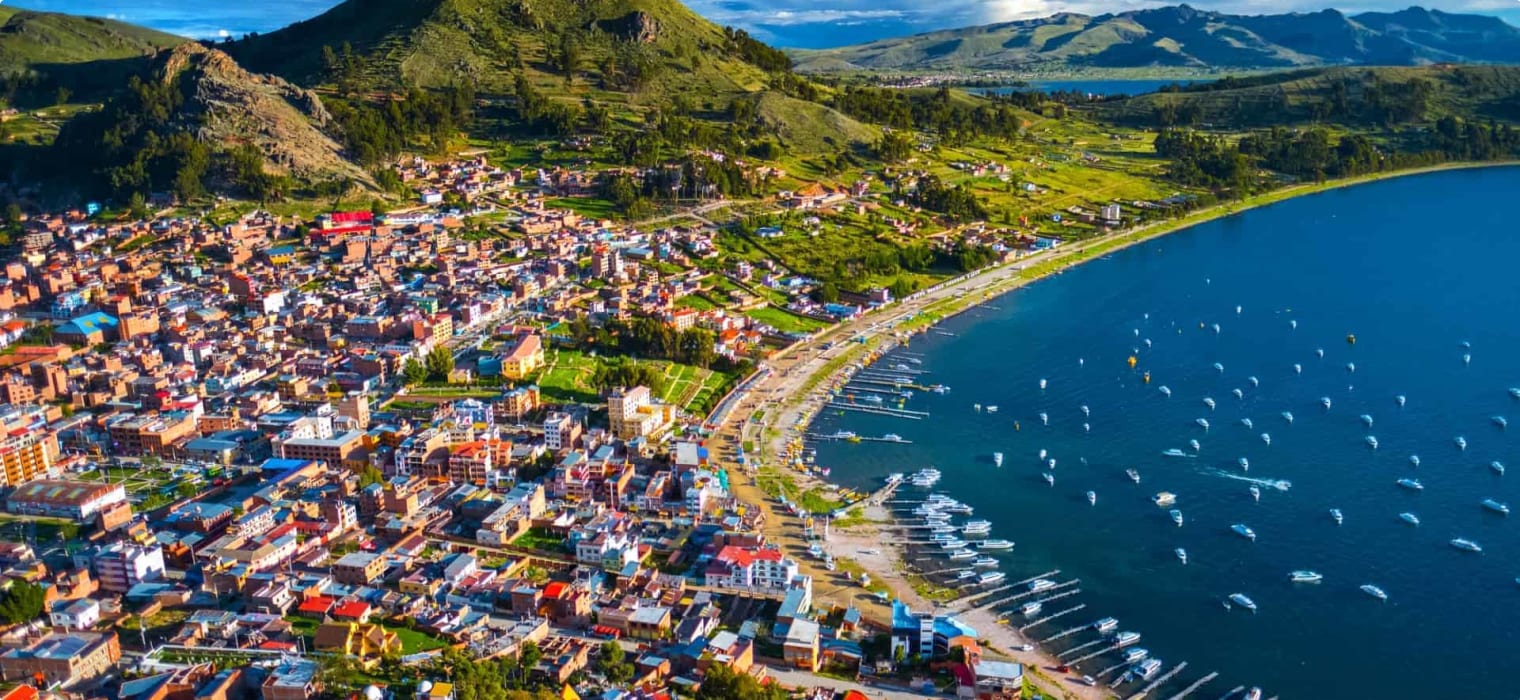
Bolivia.
Bolivia is a land of mystery and hidden secrets, with its highlands dotted with the ruins of past civilisations. Ancient temples and fallen monuments loom over the mountains and forests of this fascinating country. Join with Odyssey Traveller as we take you on a journey through one of the world’s most extraordinary travel destinations.
Bolivia Tours
Hand crafted Tours for Mature World Travellers
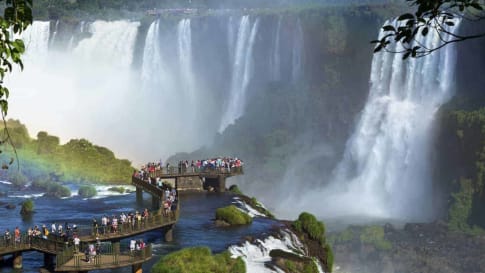
25 days
Apr, SepSouth American Small Group History and Culture Tour
Visiting Argentina, Bolivia
Experience the jewels of South America on this in-depth itinerary featuring the dramatic contrasts of this great continent on a small group tour for senior couples and solo travellers. Journey through Chile, Peru, Bolivia, Argentina and Brazil. Marvel at the ancient cultures and natural wonders of the Amazon, the snow-capped peaks of the Andes mountains, the calm waters of Lake Titicaca and the jewel coloured beaches of Rio.
From A$20,785 AUD
View TourTouring Bolivia
The need to know
Getting around
Odyssey travels by coach and occasionally uses local transport, including trains and ferries. Specifics are always outlined in your tour itinerary. Buses are the most common and most inexpensive form of travel in Bolivia, with buses heading areas generally inaccessible by other forms of transport. Taxis can be found in almost any town and are also a fairly cheap option. Air travel is a more expensive way of getting around, but can save you days of travel time. Train services however are limited, with passenger trains only serving a fraction of the country.
Accommodation
In major cities, Odyssey stays in centrally located 3-4 star hotels, with easy access to public transport. In smaller towns or rural areas, we usually stay in family-run hotels or guesthouses. On our longstay tours, during which you spend the length of the tour in a single location, we use serviced apartments.
Tour guides
Odyssey always engages local guides with regional knowledge to ensure an authentic experience during which you can learn as much as possible about the history and culture of places you visit.
Geography, Environment, & Weather
Bolivia is a landlocked country and covers and area of 1,098,581 square kilometres. The Andean mountains dominate the western half of the country, with the Andean region one of the highest inhabited areas in the world. Between the Cordillera mountain chains lies the Alipanto, a flat plateau about 800km long and 130 km wide, lying at elevations between 3,650 metres and 3,800 metres. To the east of the country, the terrain descends into swamps and rainforests of the Oriente region.
Climatic conditions differ across the three regions of the country. The Altiplanto highland region has a variable climate ranging from cool and humid to semi-arid, while the Yungas lowland region and the Llanos tropical region feature humid and rainy conditions. Depending on where in Bolivia you travel, and when you intend to go, check
World heritage sites
Bolivia has 7 UNESCO World Heritage Sites. You can view the official list of the sites here (https://whc.unesco.org/en/statesparties/bo). The listed sites include:
Fuerte de Samaipata, an archaelogical site featuring the largest single rock-carving in the world
Jesuit Missions of the Chiquitos, Christian missionary settlements which were constructed in a striking blend of Catholic architecture and local traditions.
Noel Kempff Mercado National Park, one of the largest parks in the Amazon Basin and home to an incredible array of flora and fauna.
Festivals & Events
Bolivia’s rich culture celebrates both its Spanish and indigenous heritage through numerous festivals and events over throughout the year. The syncretic nature of Bolivian culture is showcased in colourful events such as the Carnaval de Oruro, an exuberant street parade in the town of Oruro with revellers wearing elaborate both Catholic and native deity-themed costumes and parading through the streets. Alasitas is one of the more curious festivals held in Bolivia, with thousands of Bolivians heading to La Paz to purchase miniature replicas of the things they desire in the coming year. The traditions and customs of much of Bolivia’s indigenous past are preseved and commemorated through occasions such as the festival of San Francisco Xavier, featuring native dances, and Aymara New Year, whereupon the winter solstice is celebrated with music and festivities, and crops are offered as gifts to Inti, the god of fortune.
Reading list
A Concise History of Bolivia, by Herbert S. Klein
The Enigma Of Tiwanaku And Puma Punku: A Visitor’s Guide, by Brien Foerster
Bolivia in Focus: A Guide to the People, Politics, and Culture, by Robert J. Werne
The Lost City of Z: A Tale of Deadly Obsession in the Amazon, by David Grann
Eating & Drinking
Bolivian cuisine melds both Spanish and native influences, with native ingredients such as potatoes, corn, and beans making their way into popular dishes such as salteñas (pastries filled with potatoes, carrots, peas, and meat) and papas rellenas (potatoes stuffed with meat and vegetables, coated in flour batter and deep fried). The fare of Bolivian cuisine is generally filling and hearty, with meat commonly featuring in Bolivian food; notable dishes including pique macho (a mix of sausage meat, steak, onions, tomatoes and chilli peppers) and silpancho (layers of white rice, boiled potatoes and egg, topped with salsa).
If you’re looking for some beverages to try, beer is widely available in Bolivia, with all major cities having their own breweries. Chicha de colla is a traditional alcoholic beverage in Bolivia made from fermented corn, and has a slight bittersweet taste. For something non-alcoholic, traditional non-alcoholic drinks include Licuado (water or milk blended with fruit and sugar) and mocochinchi (peaches and spices brewed in water).
Health & Safety
As of writing, smartraveller.gov.au advises travellers to exercise a high degree of caution when travelling through Bolivia. Civil disturbances due to domestic issues may occur, so avoid large crowds. Be aware that if you ascend altitudes greater than 2,500 metres, you may develop altitude sickness, so check the destinations on your travel itinerary and take any necessary preventative measures if required.
Electrical Supply
Whenever you travel overseas, it’s always wise to take an appropriate travel adaptor. Bolivia’s electricity supply runs at 115/230 V and 50Hz. Bolivia uses both Type C and Type A plugs, so make sure you have the right travel adaptor with you.
Articles about Bolivia
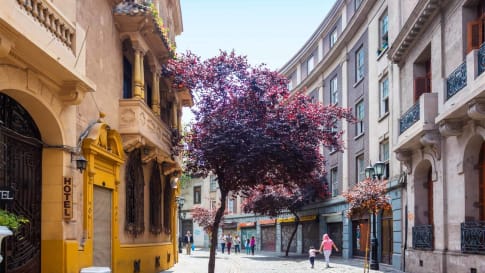
Chile, Peru & Bolivia travel advice for Mature & Senior Travellers
Chile, Peru & Bolivia travel advice for Mature & Senior Travellers In a recent article on South America published by Odyssey Travellers , we learned about the history and geography that makes South America one…
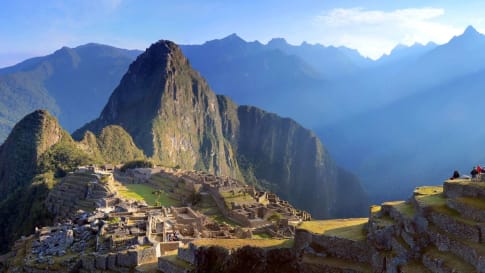
South America travel advice for touring
South America travel advice for touring The South American continent offers mature & senior travellers limitless opportunities for adventure. Whether you are drawn to the wilds of the Amazon and the soaring Andes, or seek…
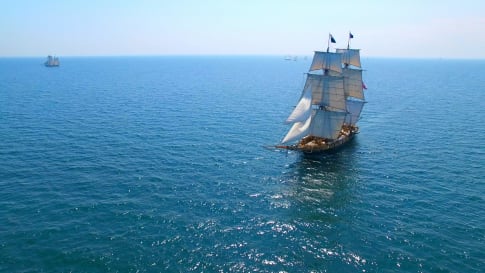
Spanish Exploration and Conquest of the Americas
An Antipodean travel company serving World Travellers since 1983 with small group educational tours for senior couples and mature solo travellers. Article summarizes the Spanish explorers and the race against the Portuguese for access to the Americas.
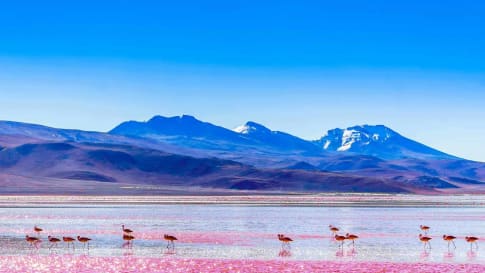
Discover Bolivia: The Definitive Guide for Travellers
Discover Bolivia The lakeside town of Copacabana, Bolivia Bolivia is a landlocked country in South America, bordered by Brazil, Paraguay, Argentina, Chile, and Peru. Its capital is historic Sucre where the Supreme Court is established,…
Tour Reviews
Well balanced, with a great group leader in John Pickrell. He was extremely informative and had great contacts so we saw behind the scenes at museums.We covered a lot of distance but with 2-3 nights in a number of places had plenty of free time to do your own thing.
Participant 2017
Argentina Dinosaur dig including Titanosaur small group tours
Well balanced with city vs country, visits to remote dinosaur sites, town museums, a winery. The hands-on dinosaur dig and fossil preparation live-in at Lake Barraleas was superb and I could have spent more time there as we went out a lot. It was excellent with a great Argentinian team looking after us..
Participant 2017
Argentina Dinosaur dig including Titanosaur small group tours
We were privileged to go where many tourists could not go but some of that was due to the presence of John Pickrell still we saw more and met more senior paleontologists that I had expected. All museums and other sites were a marvelous experience
Participant 2017
Argentina Dinosaur dig including Titanosaur small group tours
All guides were excellent. Each had done a lot of research on dinosaurs before we arrived and had a good sense of what we were after.
Participant 2017
Argentina Dinosaur dig including Titanosaur small group tours
Accommodation exceeded expectations in most cases.
Participant 2017
Argentina Dinosaur dig including Titanosaur small group tours
Highlights
The best of Bolivia
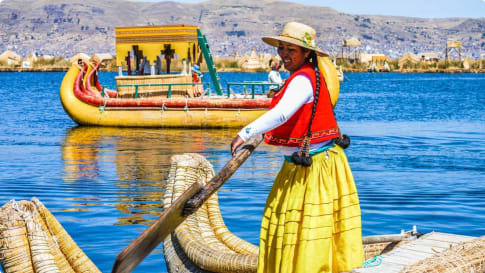
Lake Titicaca
Lake Titicaca, the spectacular lake that straddles the Bolivia-Peru border.
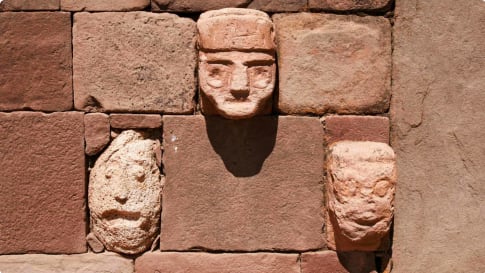
Tiwanaku ruins
Tiwanaku, home to monumental ruins of the former Tiwanaku empire.
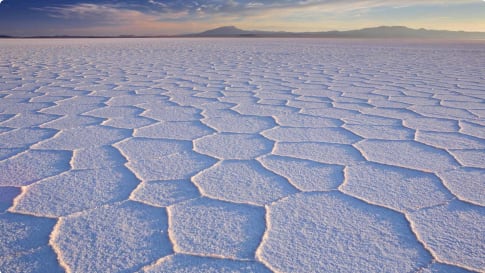
Salar de Uyuni salt flat
Salar de Uyuni, the otherwordly salt flat covering a remarkable 10,582 square kilometres.
FAQs
What is the time zone in Bolivia?
Bolivia has a single time zone, Bolivia Time (UTC-4). Daylight savings are not observed in Bolivia.
Is tipping customary in Bolivia?
If you’re on an Odyssey tour, we take care of tipping so you don’t need to give it a second thought. However, in your free time, or if travelling independently, it’s essential that you tip an appropriate amount for services. Tipping is not mandatory in Bolivia, but is generally appreciated. In hotels, bell boys would expect about Bs5-8 per bag, while hotel maids should get about Bs8 a night. In restaurants, a tip of 5-10% is a nice gesture if the service was good.
What is the internet access like in Bolivia?
Wi-fi should be freely available in most hotels, cafes and restaurants.
Can I use my mobile/cell phone while in Bolivia?
Check with your mobile phone provider to see whether you’re able to make calls and use data while in Bolivia. Many providers will allow you to pay a daily fee that allows you to make calls and check the internet while only being charged your regular rates. However, be certain to inform your provider that you’re heading overseas, because just like a bank they can turn off your service as a result of unusual activity.
Responsible travel tips for Bolivia
- Learn at least the local greetings to break the ice. Although some locals speak English, the more you know of the native language, the greater your experience of the country will be.
- Carry a business card in your wallet or purse from your local hotel, to assist you with the return journey if you do become lost.
- Always ensure that you are covered by travel insurance. If you need advice on this feel free to contact Odyssey and we’ll be able to help.
- Before departing, make sure you have a number of bolívares soberanos in a range of denominations. You don’t want to be carrying around enormous amounts of cash, but take enough to make it easy to pay in locations that might not accept credit card. It will also help you avoid card transaction fees.
- When travelling independently, make sure you check the opening hours of shops and museums so that you don’t miss out! Also be certain to check whether your trip coincides with any public holidays, so you can plan accordingly.
- Before departing on your trip, contact your bank to inform them that you may be making purchases overseas. Otherwise, they may flag any activity on your account as suspicious. Also, check which ATMs and banks are compatible with your cards, to ensure you can withdraw cash with minimal fees.
